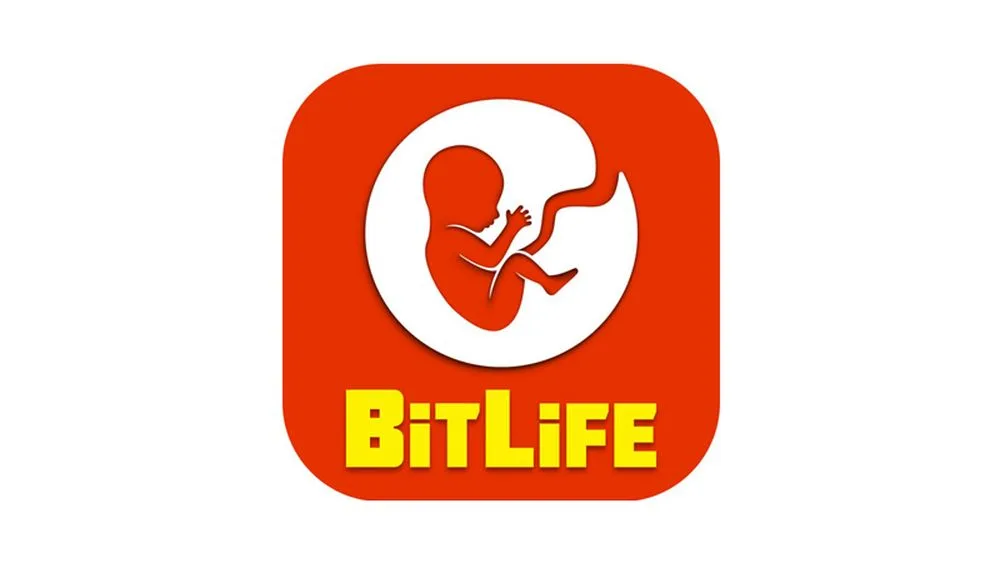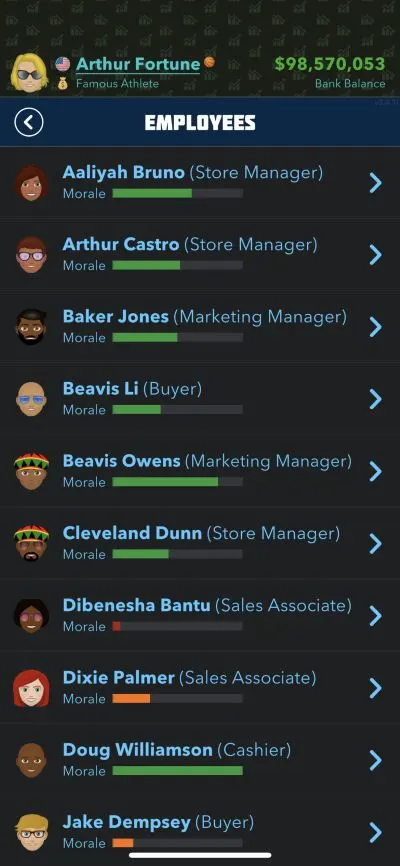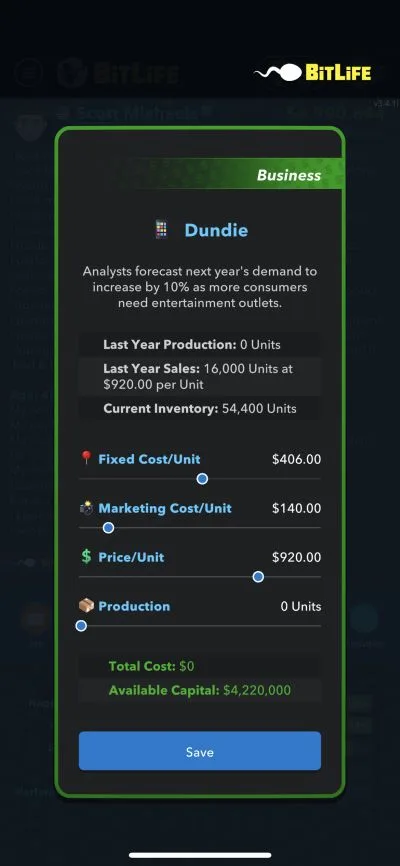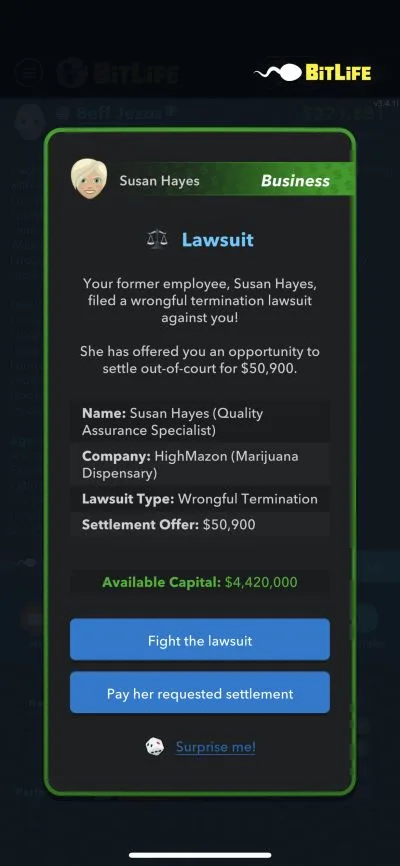It is now officially more than four years since Candywriter first released BitLife for iOS devices, as the life simulator first became available on the App Store on September 29, 2018. It almost feels like yesterday, but then again, the company has kept making the game better and better by adding new features, so much so that the BitLife you may know and love today (on both iOS and Android) is unrecognizable compared to the version that was introduced in the fall of 2018.
In an interesting move for Candywriter, the company didn’t just roll out one Business Update over the past few weeks — they actually rolled out two, with the second one adding a few new features and patching up some issues that were spotted in the first update. So while you weren’t able to engage in funny business by cooking the books after the first update, the second part now allows you to do so.
But that’s just one of dozens of new features you can enjoy in this new special career, which, as we’ve been mentioning frequently, is just one of several that Candywriter will be adding, or has already added to BitLife. This BitLife strategy guide covers all the key features of the Business Update, so read on if you’re looking to make a killing in the world of business as a first-time virtual CEO.
Getting Started in the World of Business
In order to start out as a businessman in the BitLife universe, you need one thing, and that’s a ton of capital — we’re talking a couple hundred thousands if you’re opening the cheapest business, which is a food truck, and upwards of $300 million if you’re starting your own car manufacturing company. That means this would be most advisable if you’re using a legacy character who’s inherited a huge fortune, or if you started out as an athlete, musician, actor, or any other famous celebrity who’s earned millions upon millions and wants to try something new.
This would be especially realistic if you started out as a pro athlete, as this at least gives you something to do after you retire, as opposed to taking an office job, which really isn’t that common as compared to real-life athletes starting their own businesses.
Now that we’ve established that having a lot of money is essential in starting out a business in BitLife, let’s talk about the two options you have if you choose to become a businessperson. You can choose Startup, which lets you start a brand new business from the ground up, or you can go with Acquisition, where you can bid for an existing business that is currently on sale.
Startup would be the cheaper option, and as we mentioned above, Food Truck would be the most inexpensive path to take, followed by Gift Shop, Health Food Store, and Brewery. Novelty would be the first business that will cost you at least a million worth of startup capital, and a number of other options (Marijuana Dispensary, Clothing Outlet, etc.) will likewise cost you less than $10 million. Dairy Farms and Wineries cost $20 million to open as a startup, Consumer Electronics (phones, tablets, etc.) and Robotics both exceed the $50 million mark, and Pharmaceutical, Semiconductor, and Car Manufacturer are all upwards of $100 million.
Obviously, you’ll need to make sure you have enough in your bank account before you choose a new business, but you should always pay attention to the Demand bar — if the bar is green and at least 80 percent full, that should increase your chances of turning a profit, and if the bar is orange or red, you might not have enough customers to keep your business in the black.
Aside from the Demand bar, you should also keep an eye out for the Competition bar, which will pop up when the time comes for you to actually make the purchase. If the bar is orange or red, meaning mostly full or completely full, that could eat away at your profit due to the sheer number of companies you’ll be competing against. But if the bar is green, that means there aren’t too many firms in your industry who could take up a piece of the sales pie.
Look for the best combination of high Demand and low Competition and you should be on the right track. You’ll also be asked how much you wish to invest in, or how much money you want to bid if you’re acquiring the business — it’s best in most cases to leave this slider alone, though you can always play with it to see if a lower bid would be accepted.
Those same principles, including paying attention to Demand and Competition, apply to Acquisitions — before acquiring a new business, you will be shown the current customer Demand, but as you look at the list of available businesses to purchase, all you’ll see is the cost. While buying an existing business is naturally more expensive than starting one from scratch, the advantage here is that you just might end up inheriting a lucrative business that’s ready-made for success.
Of course, there’s also a chance you will be purchasing a company that’s seen better days, though generally, it’s still easier, if much more costly, to go the Acquisition route if you want your BitLife Business Update experience to get off to a flying start.
The last point we’d like to make in this part of the guide is the presence of the Performance bar at the bottom of your basic stats after you buy a company. As long as you’re in charge of any kind of business as the CEO, your performance may be affected by good things (a financially successful year, happy employees, etc.) or bad things (loss of revenue and net income, employee lawsuits, etc.), so keep an eye on this if you’re trying to make the most out of your in-game status as an entrepreneur.
Make Sure You’re Researching Your Products Before Launching Them
Ultimately, the BitLife Business Update will allow you to launch multiple products, but after you’ve chosen a business to acquire or start up, your next task would be to choose your first product. The drop-down bar will reveal a number of items you can theoretically sell at your new business, but before actually choosing an item, it’s important to perform the necessary market research.
Again, you’ll be encountering the same Demand and Competition bars, and getting another chance to look for the ideal mix of high Demand and low Competition — if there aren’t too many customers who are into your potential product, you might want to pass, and the same applies if there are too many rival companies that offer it.
Be patient here, and don’t worry about having to pay a few thousands for the analysts to do their job — assuming you started out as a multimillionaire, this should be a mere drop in the bucket. (You’ll also have to pay a few more thousands for the actual product launch.)
After choosing your maiden product, you will also be asked to name your business. Next up is naming your product — it could be your own choice of name or you could stick to the generic ones BitLife throws your way. These two are cosmetic details, so as long as you aren’t using any dirty words in your business and product names, it wouldn’t affect the success or failure of your business by a long shot.
Changing Suppliers to Cut Costs and Improve Quality is Possible, But Not as Easy as Before
If you’ve just started playing BitLife and testing the new Business Update features out for yourself, you probably don’t need to make any changes to any of the figures when launching your first product. You will see sliders for Fixed Cost per Unit, Marketing Cost per Unit, Price per Unit, and Production — it’s only the latter three slides that you can adjust, as Fixed Cost is just as fixed as it sounds.
You cannot manually edit the price you’ll be paying per unit produced, as that will be dependent on your supplier. But you do have the option to change suppliers after the product has been launched, and you can do that by tapping on the product, choosing New Supplier, and shopping around for a new company (or individual) to supply the raw materials for your company to produce.
When the first part of the Business Update rolled out, this was very easy to do, and it was a great way to free up some capital and allow for more units to be produced for your company’s other offerings, among other things.
But ideally, when changing suppliers, you’ll want to look for the best combination of low cost per unit and good quality. Both of these variables seemed to be randomized at first, so it was easy to replace your old, costly (and frankly overpriced due to the subpar quality) supplier with someone who offers the materials for much cheaper and with better quality.
The second part of the Business Update, however, appears to have nerfed this exploit. Although it is still possible to luck out and find a supplier that offers the perfect (or a near-perfect) mix of high quality and low cost, chances are much greater now that you’ll be getting what you pay for when it comes to this facet of the Business Update.
Know Your Employees
Initially, there’s a good chance you’ll be starting out with only a couple of employees if you chose the Startup option, but if you went for an Acquisition, it will all depend on how many Facilities the business had at the time you bought it out. You may potentially have two pages’ worth of employees in such a situation, but regardless of how many you start out with, you should make sure you go beyond merely looking at their Morale, which is the only visible bar in the Employees sub-menu.
A lack of morale could do a number on an employee’s performance, but there’s another visible stat that determines their raw talent or aptitude for the job, and that would be their Competence. Don’t expect any super-skilled workers right off the bat if you’re starting up a new business; if you have God Mode, you can easily edit the Competence stat, but otherwise, you may be better off grinning and bearing it, as we’ll be explaining later on in this guide. It’s not uncommon for incompetent employees to simply disappear and get replaced by new ones once you hit the Age button to move to the next year of your life/next fiscal year of your business.
All employees have the following Activities listed in their pages — Compliment, which allows you to say nice things to them, usually for a job well done, Fire, which is pretty much self-explanatory and lets you issue them the pink slip, Bonus, which lets you reward employees financially out of your company’s coffers, Recognize, which we’d say is like Compliment on turbo mode as it lets you shout out your employees who are doing well in their job (unless they aren’t), Warn, which can be used to discipline those ineffective or outright toxic workers, and Yell, which we’d probably call another form of discipline, though it’s more out of anger than out of caution.
How to Improve Employee Morale and Competence
This isn’t included among the options in the employee menu, But if you want to improve that Morale stat not just for one but for multiple workers as well, your best move would be to take them out on a team building exercise. It could be something as simple as having some drinks with your workers at a bar or something as elaborate as a skiing or snowboarding trip, but team building exercises cover everyone in your workforce.
Choose from the drop-down box for a list of activities you can take your employees to, and keep in mind the cost of going on that exercise. Usually it won’t be much anyway, but it’s always good to check, as these activities may be just what the doctor ordered in terms of keeping everyone’s spirits high and therefore improving their performance at the workplace.
Aside from the Team Building exercises, there are the simple commands you can choose from the employee menu, such as Compliment and Recognize. These small actions can pay off big-time, not only in improving Morale but also eventually improving their Competence. A happy worker is a productive worker, and that should manifest in Competence increases over time.
Of course, increasing your payroll is a great way to improve both employee Morale, and ultimately their Competence. Go to the main Job menu, scroll down, and tap on Payroll — here, you can configure the compensation levels for your workers, which starts at Dirt Cheap and goes all the way up to Big Bucks. Just be careful when making any changes to the compensation packages, as making the compensation too high might not look good on your balance sheet and making it too low might upset your workers and cause their molale to drop!
If You Can Afford It, Hire a Consultant, But Not Too Often
In your Job menu, you will see a section that says “Consultant,” which will allow you to “get some expert advice.” The cost of hiring a Consultant will depend on the size and value of your business — if you own a smaller business, for example, you may only need to pay less than $50,000, but bigger business will easily cost you at least $100,000 to hire a Consultant.
Either way, enlisting the services of these individuals doesn’t come cheap, but if you’ve got a lot of money in your bank account and have enough money to spend for your business, it wouldn’t hurt to drop some dough to get their advice, especially if you’re trying to follow up the success of your last fiscal year.
The advice from these consultants will depend on your business’ current issues — for example, if there are some employees whose Morale leaves a lot to be desired and they aren’t that skilled at their jobs to boot, the Consultant may advise you to fire these people.
You will, however, want to go easy on Consultant services — as we mentioned above, it can be costly to hire one, and that Consultant won’t be added to your workforce in such a way that they will keep giving you new advice each year until their contract runs out. The prices we mentioned above are per-consultation, so if it costs you $100,000 to hire a Consultant, you’ll be paying $300,000 in the same fiscal year if you use the service thrice.
Follow the Analysts’ Advice as Much As You Could
After completing a fiscal year, you will be given a recap of your business’ performance in your Annual Report — here, you can see how much revenue your company earned, how much net income you earned, what your profit margin was for the fiscal year, and how many units you sold of each product.
Proceed beyond that and you’ll get the analyst forecasts for each of your product — how many units were produced, how many were sold, how much revenue/net income was earned for that particular product, and how your customers rated that product. Most importantly, the analysts will tell you how many units you will likely be able to sell if you kept the product at the current price.
Although this won’t always be the case, you should take your analysts’ advice into consideration, so if they suggest that you need to manufacture 5,000 more units of a certain product, tap on the product, go to Production Plan, and adjust the Production slider so that you’re adding 5,000 units from the previous year’s total.
You don’t always need to be super-accurate, especially when the analysts give their projections in the form of percentages, such as 25 percent more units due to high demand, 25 percent fewer units due to changing market trends, etc. And if the analyst warn you that consumer preferences may be changing, it might be time for you to retire the product — another option available in the product sub-menu.
Due to financial constraints, i.e. your available capital is running out, you may not be able to follow every piece of advice your analysts give you. But that’s why you can also go to the main Job menu, tap on Invest, and inject some of your personal funds to ensure you have enough capital to meet all the demands.
As long as you’re trying your best to take your analysts’ forecasts into consideration while taking good care of your employees, your Performance bar as a CEO should keep improving. But even if you take good care of your employees, there may be situations where you have no choice but to let them go.
Terminated Employees Have the Potential to Sue!
We did mention earlier that it is possible to fire employees thanks to the BitLife Business Update, and that you may sometimes be advised to fire those who are low on Competence and low on Morale. Makes perfect sense, right? If an employee isn’t happy at their job and isn’t that skilled at it anyway, then perhaps it’s about time you should be wishing them the best in their future endeavors.
But employees are humans too, and if they feel that they were sacked from their job for no good reason, there’s a chance they will take you to court and file a wrongful termination lawsuit against you. That’s how things work in the real world, and that’s how they also work in the BitLife universe.
If a terminated employee chooses to sue, the best course of action in most cases would be to simply pay them the money and settle out of court. If you choose to go to court, that’s where things could get dicey. Depending on how much you’re being sued for, your legal fees might be more than the cost of the settlement, and if you lose the case, you won’t just have to pay for your lawyer; you’re also going to have to shoulder the fired worker’s legal fees as well!
This may only be a huge financial problem if you’re running a big company and the fired worker was getting paid pretty nicely before you fired them. Still, it won’t look good on your Performance rating if employees end up suing you, so do this with discretion and make sure you’re doing it for the right reasons.
Don’t Neglect Inventory!
This could also be included in the above tip about analyst forecasts, but we believe this is important enough — and overlooked enough — to stand on its own. If the sales of a product fall short of the number of units you produced in a fiscal year, those units will be filed under inventory. However, don’t think of this as a bad thing, as it often means you can simply produce fewer units, or not produce any new units at all.
This could really help you avoid unnecessary expenditures that could seriously eat into your available capital, so when reviewing what the analysts have to say about your products’ performance, check and see if there are any units that are in inventory, and figure those units into the sales projections they gave you.
On the other hand, you should also keep in mind that if inventory remains unsold for too long, it could be written off, and that could negatively affect your financial performance, as well as the actual Performance bar. This will hit very close to home if you’re running a food business or dealing with anything that expires, though you may also encounter it in businesses such as Consumer Electronics, where unsold inventory can be written off due to “Age” — or more like obsolescence in that case.
Cooking the Books
This is another feature that wasn’t included in the first update, but the second part of the BitLife Business Update allows you to “cook the books,” or declare a higher net income on your financial reports to potentially improve your company’s valuation.
Normally, we would not advise this, but if you’re planning to eventually sell your business because it’s too challenging to run or because you think you can earn a handsome profit on the deal, it might be worth a try to cook the books for a year or two and see if you can get away with it.
Now we all know that cooking the books and declaring false financial statistics on the annual report is illegal, and with that comes the risk of getting caught. If you get caught by the authorities, you will face a six-year initial sentence for securities fraud, and if you end up in jail for your under-the-table actions, you will have no choice but to step down as CEO and sell the business as you face the consequences of all that book-cooking.
Again, this is not advisable in almost every situation in BitLife, and the game will not allow you to control the extent of your securities fraud (i.e. you cannot choose the net income you will be declaring as part of this scheme), but if you want to try it out once or twice, it probably wouldn’t hurt in most cases.
Be Careful When Opening New Facilities
This is probably the biggest gamble in the BitLife Business Update — should you open new facilities to grow your business, potentially earn much more money while at it, and increase your company’s valuation if you should decide to sell it in the future? And with that in mind, you’ll really need to make sure your business is stable enough before you even consider opening one new facility to add to the one(s) you currently have.
For one, you definitely should not give into the temptation of opening a new facility if you’re struggling to stay in the black and haven’t gotten enough momentum yet with at least a few encouraging fiscal years in a row.
Make sure you’re following the analyst forecasts, choosing the best suppliers, and doing all the other things we advised you earlier in this guide when trying to build financial momentum, and once you’ve noticed that your products are consistently selling and your net income and revenue figures are steadily increasing, that’s when you can open a new facility — start small at first, and as the money keeps rolling in and your good fortune continues, that’s when you can add more than just one or two facilities in a calendar year.
You should also make sure you have enough capital to pay your new employees, as opening a new facility will naturally require you to hire more people and pay them according to the scheme that you selected (or was pre-selected) in the Payroll sub-menu. Increased payroll could be another reason why your plans of expansion won’t turn out as well as you had hoped, so take this into account as well before opening new facilities.
And if you still insist on pushing forward with the expansion and have enough in your bank account, don’t hesitate to tap on the Invest button for some additional cash flow!
Giving Bonuses — Save it For Those Extremely Successful Years
BitLife’s Business Update allows you to give out bonuses, either to your employees or to yourself, and this could be especially useful if you’ve got some promising workers whose morale isn’t where it should be, or if you chose a rather low salary as CEO and want to give yourself a little bit of a self-reward for a job well done. Go to the Employees section, tap on an employee’s name, then on the Bonus option to give them a bonus, and go to the Bonus section in the main menu if you wish to give yourself a bonus.
While giving out financial bonuses might sound like a quick fix if you’re trying to boost company morale, it wouldn’t be worth it to give bonuses (and morale boosts, as a result) to employees who aren’t worth it. That means anyone whose Competence is at red or orange levels with Morale that is far from perfect.
And since those bonuses go against your available capital, both types of bonuses, especially the ones you give to yourself, should be saved for those years where you made a lot of bank and have the luxury of spending beyond what is essential to the business.
Make Good on the Random Interactions
As is the case in just about every other major BitLife update, you can expect random interactions with NPCs after you hit on the Age button, review the annual reports, and confer with the analysts. On the plus side, this could be an opportunity for you to give recognition to employees who are doing a good job, as the dialog box will tell you.
However, you may also encounter situations where you’ll be briefed about employees who are spreading rumors about their coworkers, in which case you’ll need to discipline them, or even fire them for their shenanigans.
The important thing in these situations is that you’re focusing on doing the right thing, as this could improve your Performance stat even in years where business wasn’t as good as it usually is, or not good, period. Reward the good workers and sanction the not-so-good workers, in other words, and if you need to take out the figurative trash, fire anyone who’s making the work environment toxic.
The End of an Era — Selling Your Business and Going Bankrupt
Unfortunately, all good things need to come to an end, and that oftentimes applies to the companies you acquire or start up through the Business Update. That doesn’t necessarily have to be a bad thing, though, as you can sell your business if you get a nice enough valuation on it. Scroll down in the main Job menu, go to Valuation, and for a few thousand dollars, an expert will tell you how much they think your business will be worth if you sell it.
If the figure exceeds the amount of money you paid to start the business by a healthy margin, you can proceed to the Sell section and choose your selling price. Otherwise, it’s back to the drawing board and business as usual as you continue finding ways to increase those figures and make your company more valuable.
When selling your business, make sure you’re choosing a figure that’s as close as possible to the valuation that was given to you earlier. As it is in other BitLife situations where you need to sell something, avoid those blatantly low-ball offers, though if the offer isn’t that far off from the asking price you had set, it wouldn’t hurt to go for it.
Now there’s a reason why we mentioned “healthy” margin above, and that’s the fact that taxes will come into play when you sell your business. The taxes can be quite onerous and could eat into 30 to 40 percent of the money you receive from the sale of your business. That means you may earn a gross profit through the sale but also end up with a net loss. It has happened to us quite a few times while running play-throughs for the Business Update, so be absolutely sure you’re selling the business at the right time and at the right value!
On the opposite side of the spectrum, you may be left with no choice but to shut down if your business is performing terribly — in other words, the poor decisions and bad luck could add up, and you may be forced to declare bankruptcy after running out of capital.
Once you’re declared bankrupt and your business is liquidated, you will still receive some money based on the value of your business at the time you went under — naturally, you’ll end up with a loss, but in most cases, you’ll still have enough to try again and start another business. Just be sure not to “Blame everyone else” when prompted, as that won’t look good on your reputation as a businessman/CEO if you’re trying to acquire a new business or hire new employees.





















Kenneth Ilao
Thursday 13th of October 2022
What isa the relation of Market Value/per product to price per product and production number? I'm having a problem also about the forecast. Can you please advice some tips regarding forcast.